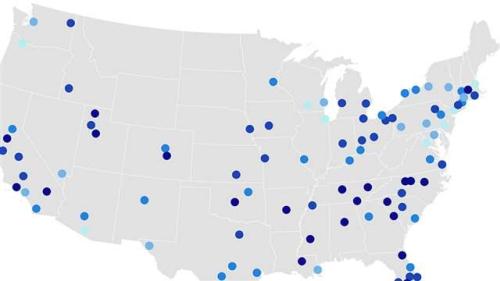Millions of zero-vehicle households live in areas well served by transit. Yet hundreds of thousands of zero-vehicle households live out of transit’s reach, particularly in the South and in the suburbs. And those with transit access still cannot reach a majority of jobs in metro areas within 90 minutes. Based on these trends, leaders must recognize these households’ unique mobility needs and aim to improve job accessibility through sound policy.
Find statistics on zero-vehicle households in your metropolitan area »
Read the analysis on metropolitan transit accessibility to jobs »
View our interactive map to learn more about transit access in your area »
An analysis of data from the American Community Survey and 371 transit providers in the nation’s 100 largest metropolitan areas reveals that:
In the nation’s largest metropolitan areas, 7.5 million households do not have access to a private automobile. A majority of these zero-vehicle households live in cities and earn lower incomes. Conversely, households with vehicles tend to live in suburbs and earn middle or higher incomes. The unique locational and income characteristics of zero-vehicle households reinforce their need for strong transit service.
Over 90 percent of zero-vehicle households in large metropolitan areas live in neighborhoods with access to transit service of some kind. This greatly exceeds the 68 percent coverage rate for households with a vehicle, suggesting transit service aligns with households who rely on it most. However, some 700,000 zero-vehicle households in the 100 largest metro areas lack access to transit.
The typical metropolitan household without a vehicle can reach over 40 percent of metro-wide jobs via transit within 90 minutes, exceeding the 29 percent transit access share for households with a vehicle. The tendency of zero-vehicle households to live in cities contributes to their above-average access to jobs via transit. Unfortunately, limited job access via transit in most metropolitan areas leaves many jobs out of reach for zero-vehicle households.









